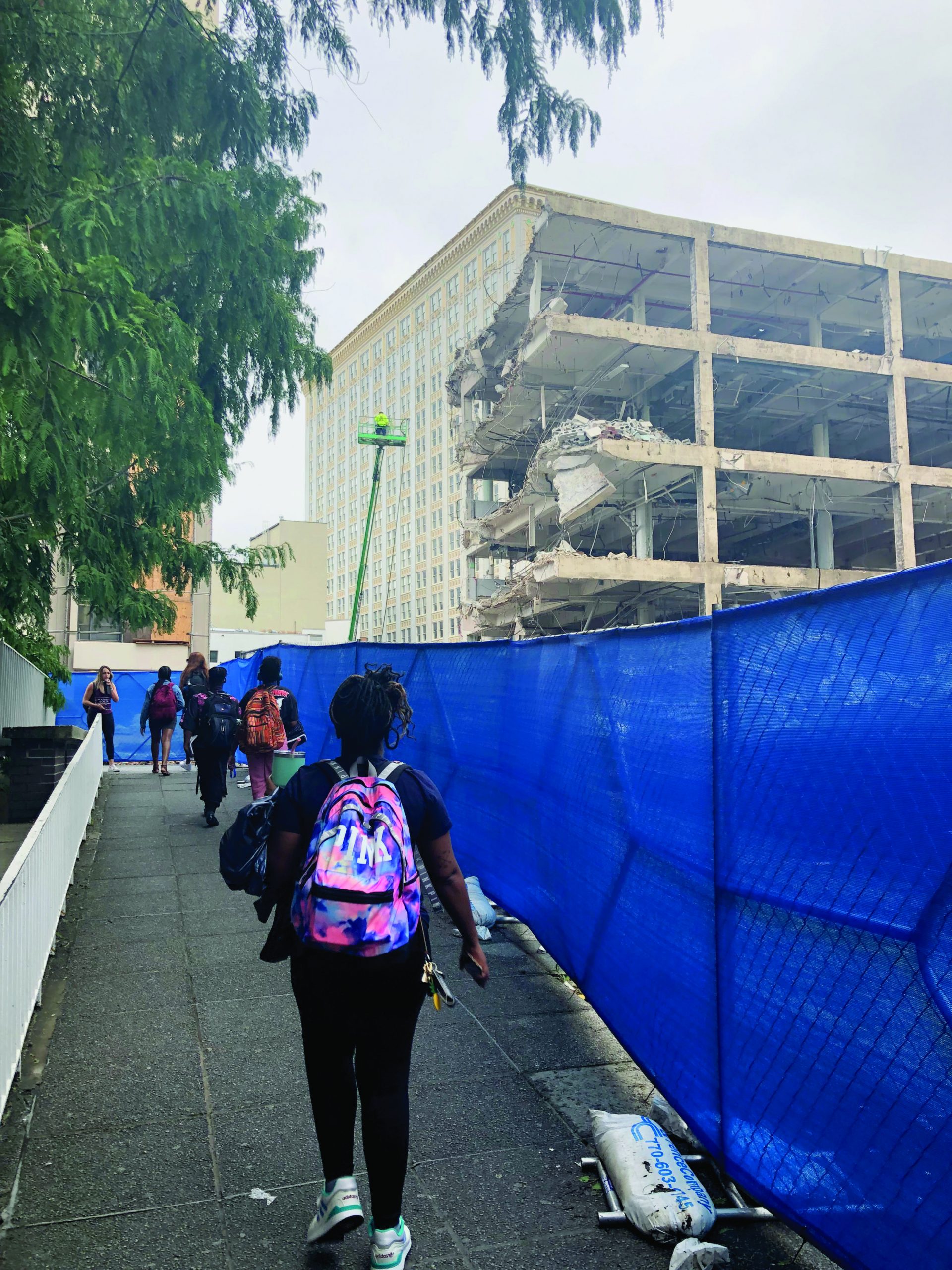
The campus is doomed, or at least it appears that way as of Aug. 26, the first day of the fall semester. Nothing like Kell Hall’s heaping mass of twisted rebar and concrete covering the Library Plaza to abate the overwhelming terror of starting week. We’ve lost the smoking circle, dear friends, and the incoming freshmen will never know the wonders of indie music and chain smoking angst once located where the wreckage now lay.
The sounds of destruction echoes from the most central location on campus. Students are herded through the campus by metal fencing, avoiding the physical debris but still inhaling the wafting dust of the once asbestos-ridden Kell Hall.
Georgia State has made an ironic swap by destroying the confusing, complex hallways and ramps within Kell Hall. Students are now forced to navigate through the fencing, and consequently, the rest of the student body subjected to the tight boundaries. It might not seem bad on paper, but shove a student body of 34,000 in there and things get tight.
A slight silver-lining exists, though. Students have begun to treat what remains of the plaza as an unlikely theater to watch the carnage of Kell Hall.
Student Tabitha Gynes spectated the destruction Thursday morning.
“I knew this was happening; I didn’t expect them to just block everything off, though. Cause it’s kind of in the way, and they let in a lot of new people, so it’s overcrowded,” Gynes said.
For now and the foreseeable future, foot travel around campus will emulate the infamous Atlanta highway traffic. Once the demolition is complete and greenspace construction begins, pedestrian space may only get tighter due to construction on Library North.
“I live off campus, so when I drive, because of the traffic, I have to get here a little earlier. I was late for class a couple times … the campus is packed,” said Joseph Virgo, a student at Georgia State.
However, the plaza may only become more constricted.
“[Pedestrian space] may be even less than what we have now,” said Ramesh Vakamudi, vice president for facilities management services. “For the safety of the students, we may have to shut down some of the walking areas there.”
Kimberly Bauer, senior director of design and construction at Georgia State, projects that March will mark the completion of the demolition. By then, portions of the promised greenspace will hopefully be completed, but it probably will not be open due to another round of construction slated to begin.
Once the demolition and greenspace are complete, the university will set out to create a new facade for Library North. Walking spaces will not be relinquished while Library North construction ensues. Until the new contractor arrives and the work begins, the extent of the obstruction will remain unsure.
“Until we have that contractor on board, which is not the same contractor working on the current project, we will not know the extent of the limits by the construction for that project,” said Vakamudi.
“I thought they would have the building out of the way by now,” Gynes said.
Some collective skepticism is due here as Georgia State’s construction efforts and plans for Kell Hall have seen numerous delays. The issue only now is, Georgia State’s already committed. The rubble has fallen and students are left with less square footage to be the second largest student body in the state of Georgia.
In the coming years, future classes may extol Georgia State’s architectural efforts. However, the current incoming freshmen are met with demolition chaos and returning students are sans the plaza they left in the spring.
